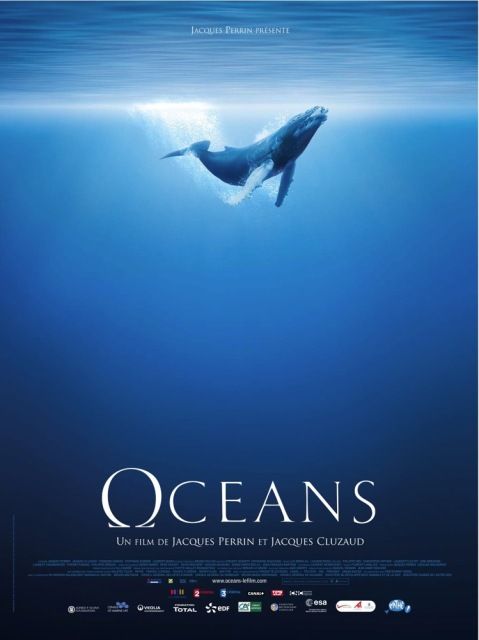
Happy Earth Week 2010, everyone! Here at ScriptPhD.com, we have devoted a number of articles to environment, sustainability and eco-awareness as part
of our continuing “It’s Not Easy Being Green” series. This year, in celebration of the 40th anniversary of Earth Day, we are devoting the entire week to articles, interviews and profiles of companies, individuals and content that raises awareness of sustainability efforts and new ideas for the green science revolution. Because water lies at the heart of most modern environmental crises, we kick off Earth Week with CaptainPlanet’s review of the stellar new DisneyNature documentary Oceans, a truly spectacular oeuvre that celebrates the majesty of our most important and delicate resource. We also include a number of practical, easy things you can do right now to make a difference globally by acting locally. For our Oceans review and to find out what you can do to help protect our Earth’s water supply, please click
the “continue reading” cut.
When I was three years old, my parents took me on a vacation to Atlantic City. It was my first time ever to see the ocean, and my parents were excited to see my reaction at seeing the water when we arrived at the beach that morning. Although I don’t remember the experience, I’ve been told that when I first set foot on the beach, I had a very concerned look on my face when I saw the waves pounding the shore. I ventured closer to the water to get a closer look, and upon surveying the incoming waves, I promptly turned on a dime and outran my parents back to the hotel without stopping. When my parents finally caught up with me to find out the reason for my distress, I said, “the river came out of itself,” in awestruck horror at the ocean’s power.
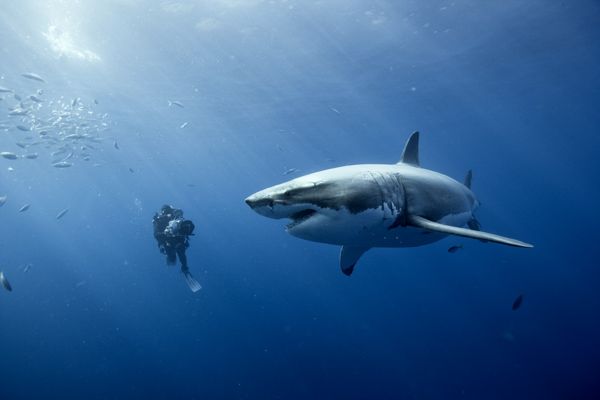
Oceans, a DisneyNature documentary premiering in theatres on Earth Day, April 22, 2010, opens on a similar theme of childhood wonder as a little boy on a beach stares out at the vastness of the ocean before him and wonders what an ocean is. As children, before we learn names for what things are called, and prior to learning about taxonomical categories in biology courses, staring at an ocean and all of its inhabitants is truly an exercise in wonder. Oceans ignites that childlike wonder while exploring the richness, beauty, danger and primordial nature of the sea. Directors Jacques Perrin and Jacques Cluzaud clearly have a knack for inciting wonder. Perrin directed the acclaimed The Winged Migration in 2001 and Cluzaud’s resume features work in IMAX films and innovative projection techniques.
Disney launched the DisneyNature label after the worldwide success of March of the Penguins in 2004. Their mission is to release one nature-related documentary per year to raise awareness about the interconnectedness of humans and nature, including what actions we can take to positively impact the environment. It is promising to see a global media corporation as hefty as Disney champion sustainability in a serious way. And it will be clear to anyone who sees Oceans, a top-notch production with stunning cinematography, narration and musical score, that Disney spared no expense to produce this film.
Pierce Brosnan, the film’s narrator, seems to have found a daft second career in narration, starting with his excellent work on the pre-recorded audio tour of the 2006 Magritte exhibit at the Los Angeles County Museum of Art. Brosnan’s voice, retaining the suaveness of his 007 days, guides us on a journey through waters of the globe. It seems at times as though the film has managed to capture every single creature that inhabits the oceans, as impossible as that would be. From whales, dolphins, sharks, sea lions, polar bears, otters, fish, crabs, shrimp, plankton, turtles, to penguins, octopi, jellyfish, and many more, it’s easy to forget just how many members of the animal and plant kingdom reside
in the oceans.
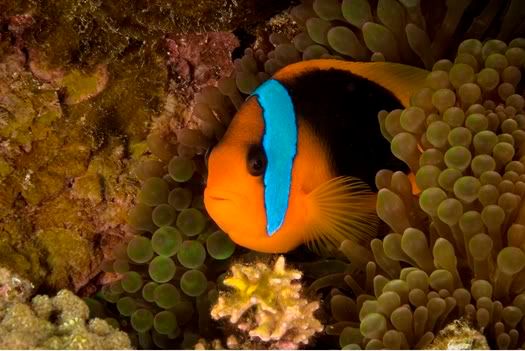
In one of the film’s most breathtaking sequences, we witness a school of sardines massacred from above and below by an army of birds, dolphins, sharks and blue whales. The sequence is an orgiastic feeding frenzy, shot from above, on the surface and underwater, accompanied by a kinetic musical score. The different animals in this sequence appear so choreographed that they invoke the ballet of dancing hippos, ostriches and alligators from the “Dance of the Hours” sequence from Disney’s animated Fantasia masterpiece. The sequence ends with a blue whale breaching the surface in the center of concentric rings of dolphins, fish and birds, a prima ballerina taking her bow.
Oceans is primarily a love letter to our world’s oceans, surveying the various topographies and lifeforms of the world beneath the surface that we often take for granted. Fortunately the film doesn’t shy away from discussing the danger that human activity poses to oceans. Although Oceans was never intended to be a hard-hitting piece of environmental journalism, it does strike a good balance between education and advocacy. The film highlights how advances in satellite imagery allow us to see where industrial pollution flows from rivers out into the open ocean, much the same way a calcified artery might appear on a heart scan. In a regular satellite photo, the river appears to be as blue as the ocean, but when the view switches to the new technology, the pollution in the river, heretofore unseen, materializes in the photo as a black, foreboding stream. The oceans have become humanity’s dumping ground for hundreds of millions of tons of trash each year. In another sequence, we see gigantic fishing nets that sweep vast swaths of water, a practice known as trawling, decimating global fish populations and killing other animals unlucky enough to get caught in the vast net. And in Antarctica, we are shown how rising global temperatures have resulted in the demise of the polar ice caps. Though the film doesn’t broach the topic directly, human water consumption is another imminent crisis facing our oceans. In a brilliant editorial, National Geographic Society chairman Gilbert Grosvenor discusses how human water usage is unsustainable and touts a National Geographic issue devoted entirely to water. (Download here.) Towards the end of Oceans, Brosnan boldly (and correctly) states that the greatest threat to the ocean is human indifference. We hope that you attend, absorb and engage in activism, even at the most basic levels to prove him (and all of us) wrong.
Coinciding with the film’s release, Disney has launched a campaign, in partnership with The Nature Conservancy, to create a protected area of coral reef in the Bahamas. Each moviegoer who attends an Oceans screening in the first week of the film’s release will help contribute to the cause. The campaign for the previous DisneyNature release, Earth, resulted in the planting of an astonishing 2.7 million new trees in the Amazon rainforest. The Nature Conservancy, founded in 1951, protects more than 119 million acres of land, 5,000 miles of rivers, and 100 marine conservation projects globally. With a staff of more than 700 scientists, they pursue their goals through science-based, non-confrontational strategies.
Oceans Trailer:
Oceans goes into wide release on Earth Day, April 22, 2010 at theatres nationwide.
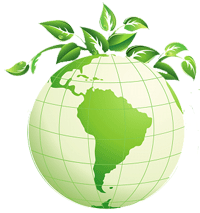
•Contact your congressional representatives to voice your support for the Oceans-21 Act: a bill that adopts the key recommendations of the U.S. Commission on Ocean Policy and the Pew Oceans Commission to develop a holistic ocean health plan. This bill, unlike past ocean legislation, treats the disease, not the symptom.
•Educate yourself about the sustainability of seafood. Check out “Bottomfeeder: How to eat ethically in a world of vanishing seafood” by Taras Grescoe.
•Check out the Monterey Bay Aquarium’s guide to seafood
•Volunteer or donate to ocean related organizations. If you live by a coastal area, attend a beach clean-up.
•If going on a cruise, choose an environmentally friendly cruise line
•Support elected officials who support the ocean.
•Keep trash out of the oceans—if you don’t already, recycle, reduce, reuse and compost as much of your waste in your home and office as possible. Earth911.com is an exceptional resource for tips on recycling, finding ways to be greener, reduce waste, and purchase products made of recycled materials.
•Have more ideas for us? We’d love to hear about them in our comments section.
CaptainPlanet is an LA-based, Northwestern University-educated, eco-charged sustainability guru who loves film, psychology and saving the planet, one waterless urinal at a time…
~*CaptainPlanet*~
*****************
ScriptPhD.com covers science and technology in entertainment, media and advertising. Hire our consulting company for creative content development.
Follow us on Twitter and our Facebook fan page. Subscribe to free email notifications of new posts on our home page.
]]>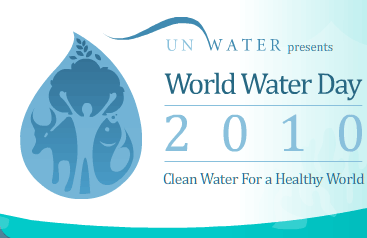
“Whiskey is for sipping, but water’s for fighting.” —Mark Twain
Today, March 22, 2010, is World Water Day, an initiative formed at the 1992 United Nations Conference on Environment and Development. As we head into Earth Day next month, no environmental issue carries more sociopolitical, economic and health ramifications than a clean and abundant supply of water. Some of the highest global morbidity and mortality rates are directly related to lack of access to clean water—both in contracting communicable diseases as well as agricultural impact that aggravates famine. At the heart of this discussion is a frenzied (and growing) thirst for bottled water; Americans alone bought more than 29 billion bottles in 2007. If you have long suspected that bottled water is not good for the environment, but only had a hazy notion about the specific consequences of the bottled water industry, Tapped, an Atlas Films documentary about to be released on DVD, will knock your socks off. The film expertly chronicles the insidious practices of bottled water companies and the dire consequences it has on our collective health, communities, environment, economy and policy in ways you never would have imagined. Our special World Water Day post under the “continue reading” cut.

Tapped features sparkly footage of bodies of water the world over, from oceans to rivers, lakes, ponds and streams. The sounds of burbling brooks and waterfalls throughout the film feel primal and urgent, as much a reminder of nature’s fragile beauty as they are a ticking clock, and the countdown is not in our favor. An opening salvo in the film’s first sequence sets the tone with a chilling statistic: by 2030, two thirds of the world will lack access to clean water. The film quickly segues into a scary question that is explored throughout the film; what happens if you take water, a requirement for life on earth, and turn it into a commodity, controlled by private corporations?
The answers are disturbing.
The first third of the film focuses on the three largest bottled water companies in America; Nestle, Coke and Pepsi. Nestle operates in the United States under multiple brands, including Poland Springs, Arrowhead, Ozarka, Ice Mountain, Deer Park and Zephyrhills. Coke owns Dasani and Pepsi owns Aquafina. Bottled water started as a small trend in America in the 1970s when Perrier introduced bottled sparkling water to urban professionals by way of small green glass bottles. But it wasn’t until 1989 when plastic bottles made from more mobile and lightweight PET plastic were introduced that the business really took off. At that point Coke and Pepsi got into the game because their soda sales were declining. The industry continued to grow at explosive rates, and by 2007 Americans inexplicably spent more than $11.7 billion on a free natural resource, something that was rightfully pegged in the film as “one of the greatest advertising and marketing feats of all time.”
Where these companies get their water is a controversial issue. Often, they buy small, cheap plots of land in small communities, install a water pump to access the community’s underground supply, and pump to their heart’s content with little-to-no overhead, taxes, regulation or accountability. The laws governing water usage in the US make this scenario possible. Surface water (oceans, lakes, rivers, etc.) is held as a public trust, and hence protected from poaching, or water mining, as the practice is often called. The loophole, however, is that underground water in most states is governed by a law established in the late 1800s called “absolute dominion,”
which basically translates to “he who has the biggest pump gets the most water.”
Small communities all over the country have been subject to this process, and often don’t know it’s happening until the corporations have already set up an operation. Communities in these situations have started organizing to stop the corporations from taking their water, but it is an uphill battle as corporations have teams of lawyers, lobbyists and other resources to advance their interests. In one small town in Maine profiled in the film, Nestle has set up a Poland Springs pump where it costs about six cents per gallon to pump water out of the ground. (A recent fight by Maine citizens, documented here and here has caused considerable headaches to Poland Springs.) The corporations then turn around and sell the water for $6.00 per gallon. This practice is happening in states around the country including California, Colorado, Arkansas and Michigan. The film points out that these corporations are setting a dangerous precedent that will allow them to control water sources in the future, which is why activists and concerned community members are desperately fighting to change the laws. Even citizens of Serbia, the birthplace of ScriptPhD.com editor Jovana Grbi?, are crying out against privatizing and selling its 300 natural springs, the most abundant in all of Europe, for water production.
When Congress tried to hold the water manufacturers accountable for depleting municipal water sources in times of drought, Pepsi testified that their water pumping had nothing to do with lowering the water levels of the local lakes and rivers. In a particularly surreal moment of the film, a Pepsi official tells a congressional panel with a straight face that beavers and their dams are to blame for lowered water levels. Dennis Kucinich (D, Ohio), the congressman leading the panel, counters back, “How many beavers would that take?” It might be funny if it weren’t so alarming. Take a look at this CNN report that resulted from revelations during the Congressional hearings:
The Environmental Devastation of Plastic
Act II of Tapped reveals the deleterious ecological and health fall-out from plastic bottles. Most of the bottles end up in a landfill or the Pacific Ocean. Often called “The World’s Largest Dump,” the Western Garbage Patch, located between Hawaii and California, is twice the size of Texas and largely composed of plastic. (An Eastern patch also exists, and video of it has been compiled here by the marine research group Algalita.) The film takes us to a bottling plant in Corpus Christi, Texas where local residents are dying from cancer due to the benzene emissions from the plant. They are often stuck living in a dangerous situation because no one wants to buy their home due to the close proximity to the plant. The film interviews several of these residents in one of the saddest moments of the documentary. One such interviewee, a man dying of cancer, says that were it not for the love of his family, he would feel like a piece of trash, his body the unwilling receptacle for toxic emissions from the faceless corporation making plastic bottles in his backyard. This man died shortly after the making of the film, and the film is dedicated to his memory.
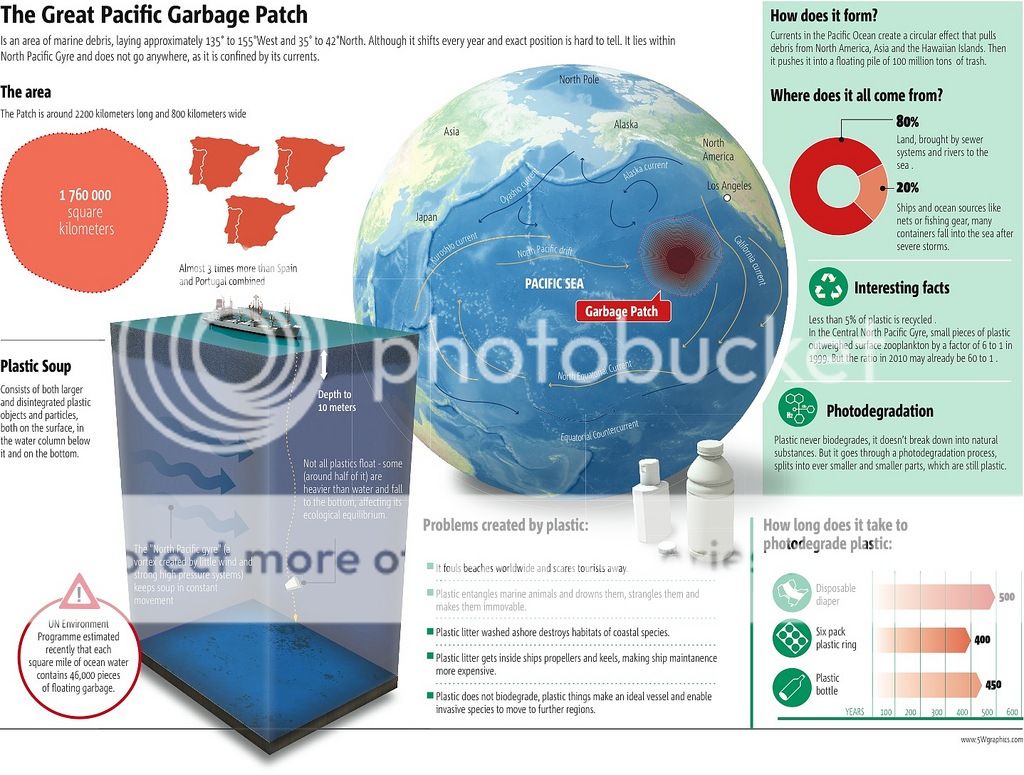
Captain Charles Moore, the founder of Algelita, appeared last week on David Letterman’s show to discuss the Garbage Patch:
About 40 minutes into the film there is a quick shot of a customer at Whole Foods placing his groceries on the conveyor belt at the cash register. The camera angle is low enough so we don’t see his face or the cashier’s face. We only see what he is buying; a sandwich, a bag of chips and a bottle of Smart Water. The image is a punch to the gut because that nameless, faceless scene has been me, too many times to count, and most likely it’s been you as well. The scene is a subtle reminder that every time we purchase a bottle of plastic water, we’ve voted “yes” for a system that is killing poor families in Corpus Christi (and elsewhere) and littering beaches in Hawaii with such large amounts of plastic that an army of dump trucks couldn’t clean it up. Even more insidious is the amount of microscopic plastic particles floating around in oceans from thrown-away plastic bottles. When one activist scoops up a handful of sand from a Hawaii beach, it looks like he’s holding a fistful of pulverized Lego’s; the plastic particles quickly replacing the sand particles. This is a result of what happens when people don’t recycle their bottles. Bottles left on the street are picked up by rainwater and washed into rivers and stream, and ultimately end up in the oceans. But recycling bottles is not exactly an entirely sustainable solution either, as the film points out. Municipalities who produce tap water, and who are in direct competition with bottled water, are often left holding the tab to recycle the leftover plastic bottles from their competitors, but with only a fraction of the budget that the corporations have.
BPA: Dangerous Chemistry
A more worrisome horror of plastic bottles is an insidious chemical called bisphenol A (BPA), used to make the hard, clear 5-gallon kind bottles most often found at a water cooler. Frederick Vom Saal, PhD at the University of Missouri, Columbia is a leading expert on BPA and its effects on human health. He calls it one of the most potent, toxic chemicals known to man because even in small amounts, it profoundly disrupts every single part of the developing male reproductive systems in lab animal studies, even at doses 25,000 smaller than any dose that has ever been studied. In larger doses, it disrupts the thyroid gland, and its been linked to a plethora of diseases from cancer to obesity, diabetes, and attention deficit and hyperactivity disorder. A recent study even found a link between BPA exposure and permanent fertility effects. These diseases have been killing people at increasingly higher rates over the last 30 years, a direct correlation to the amount of BPA floating around in consumer products over the same period of time. The FDA has not closely regulated BPA and for a long period of time, as the film reveals, relied on studies from bottle manufacturers (the people who make bottles out of BPA for a living!) that state BPA is not dangerous in small quantities. The Huffington Post recently published a series of articles revealing that BPA is found in cash register receipt paper and cardboard pizza boxes, among a host of other everyday items.

In a particularly effective scene from the film, filmmaker Stephanie Soechtig boldly asks an FDA official about their role in regulating BPA. A furious FDA press official abruptly interrupts the interview from off screen and states that if he knew BPA would be discussed, he wouldn’t have allowed the interview. The failure of the FDA to protect the public from a chemical as dangerous as BPA could be the last straw in the public’s tolerance for government incompetence and corruption, which explains why the FDA doesn’t want to discuss such a volatile subject. BPA is found in a whole host of consumer products including dental fillings, canned foods, food wrappers, food labels, and baby bottles. The good news is that due to mounting public and scientific pressure, the FDA is conducting a new study on the safety of BPA, but the $7-billion-a-year BPA industry will surely put up a fight to stop any regulation. To protect your own health, the film’s website says you should look for “BPA Free” labels whenever you buy hard plastic and avoid eating canned foods or drinking from hard plastic water bottles.
The soft plastic water bottles that most of us drink from do not contain BPA, but that doesn’t mean they are safe. As one expert in the film says, we don’t know the long term effects of drinking from PET plastic bottles. A recent British study showed that pregnant women exposed to phthalates, common across all plastics, gave birth to babies with gender defects. And in a particularly disturbing sequence from the film, the crew of Tapped buys their own samples of bottled water and sends them to toxicology labs for testing. Due to the large marketing and advertising budgets of bottled water makers, we have been led to believe for a long time that bottled water is safer than tap water. But the list of chemicals found in the bottled water, including styrene, dimethyl phthalate, and di-n-octyl phthalate, shatters that notion.
Tapped ends on a hopeful note, reminding us that change is possible, and highlighting the various battles that water activists and concerned citizens have won in recent years along with some tips for the consumer to drink filtered tap water from a reusable water container and to urge leaders to invest in our municipal water infrastructure. The Mayor of San Francisco banned bottled water at any municipal or government location. Seattle banned sales altogether at city events. Perhaps change is in effect. News outlets reported late last year that bottled water sales are starting to slump for the first time.
Look for Part II of this article containing an exclusive ScriptPhD.com Q&A between CaptainPlanet and filmmaker Stephanie Soechtig in the coming week as we continue to explore conservation issues and what can be done to enact positive change.
Take a look at this hair-raising 5:00 extended Tapped trailer:
Tapped is slated for official DVD release (with bonus features) May 1. Visit their store to purchase the DVD and Kleen Kanteen PBA-free water bottles.
CaptainPlanet is an LA-based, Northwestern University-educated eco-charged sustainability guru who loves film, psychology and saving the planet, one waterless urinal at a time…
~*CaptainPlanet*~
*****************
ScriptPhD.com covers science and technology in entertainment, media and advertising. Hire our consulting company for creative content development.
Follow us on Twitter and our Facebook fan page. Subscribe to free email notifications of new posts on our home page.
]]>